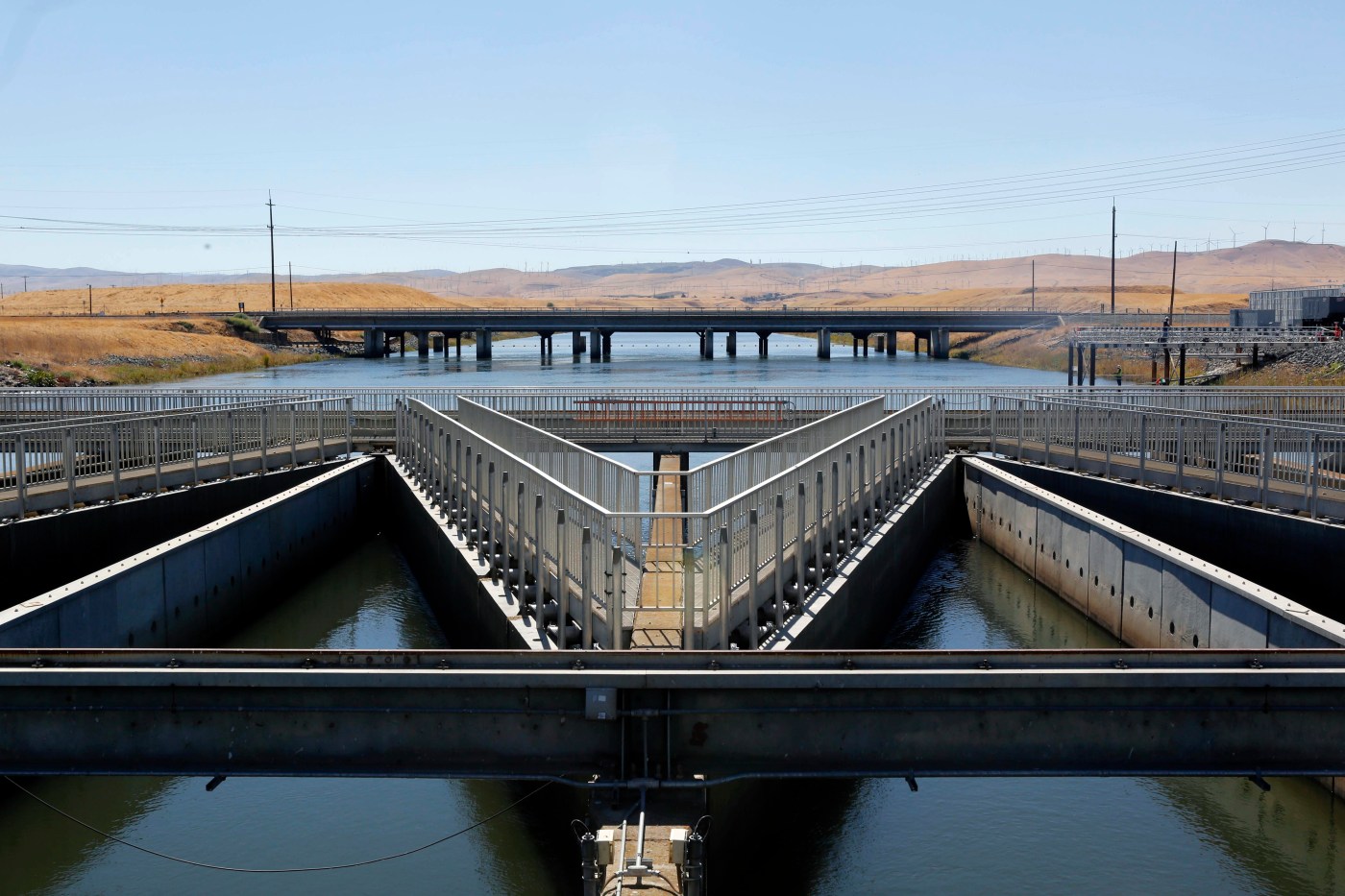One of Gavin Newsom’s first acts as governor was to start rebuilding California’s water system differently than his predecessor.
Yet California’s regulatory system of analysis, permitting and litigation for big projects is leaving him nowhere close to an actual decision point, much less a podcast-worthy ribbon cutting, before his years in Sacramento are over.
Running out of options, Newsom is now turning to the state Legislature to ram through a set of water reforms in the name of “fast tracking” a key California water initiative, the controversial “tunnel” project in the Sacramento-San Joaquin Delta. This word choice, suggesting California does anything with speed, misses the broader point.
There is nothing fast, efficient or effective at how California has built anything for some time.
We have substituted process for actual progress. And no Democratic leader in the Legislature stays in power long enough in Sacramento to really care.
This is what Newsom is up against. I think he’s basically doing the right thing in an undemocratic way, a jam job during a budget session in the Legislature.
But this is one his last moments of leverage in his governorship.
All he has left is to swing for the proverbial fences for a political miracle, a Legislature that would actually care beyond its own political horizon and do something substantive on California’s most controversial resource topic.
‘Get this built’
“We’re done with barriers,” he said in his normal bravado in announcing this plan last week as part of his revised May budget for the coming fiscal year. “Let’s get this built.”
First, a mention of two notable personal entanglements with all this.
I worked in futility on this and two previous iterations of this Delta project — following the environmental analysis, the regulatory hearings, the litigation and the inaction — for 16 years with the Metropolitan Water District of Southern California before rejoining The Bee.
Metropolitan imports water through the Delta for 19 million residents. Not only that, my wife, Karla Nemeth, runs the State Water Project as director of the California Department of Water Resources. Her job is to advocate for it.
Is it too much to ask for a California that can analyze a big project in roughly a two-term governor’s time?
Can’t we keep pace with our many problems so that the public can fully understand impacts, costs and benefits of possible solutions, so that the governments can make timely decisions, whether up or down?
That’s not today’s California.
With this tunnel project, there are potentially years more process ahead before sufficient permitting and litigating has happened to reach an actual decision point.
Delay is fabulous for naysayers. It’s awful for a state unprepared for climate change, with all kinds of huge infrastructure needing controversial upgrades.
Newsom’s Delta Conveyance Project proposes to build two new intakes on both sides of the small community of Hood and transport the supply 150 feet underground southward more than 30 miles to the California Aqueduct and the State Water Project.
This would create a water system for two-thirds of state residents that is better prepared for sea level rise, flooding and earthquakes.
Given that water isn’t exactly optional for living, a potentially durable engineering solution like this is worth running to ground.
The only real alternative to modernizing the State Water Project is to phase it out over decades, along with the federal Central Valley Project, and stop moving water from where it falls to where civilizations and farming exist.
Deliberation, no action
Good luck with that.
The previous governor, Jerry Brown, proposed two tunnels fed by three intakes. Newsom’s smaller project, announced a month into his first term, did nothing to end decades of opposition from environmental groups or from in-Delta interests who endure all the project impacts, leading to gridlock in Sacramento.
One decade of process or two?
In hopes of devising an approval process closer to one decade as opposed to two, Newsom is proposing to jettison or shrink some process.
As an example, he wants the Legislature to declare that the water department has the authority to build this project and borrow the money (participating water districts like Metropolitan would pay) and avoid years of debating the issue in court. He wants to separate a fight over updating the project’s existing water right. And he wants to limit how long it takes a court to determine the adequacy of the environmental analysis and decide on property condemnation.
If Newsom gets the Legislature to go along, the next governor in the first term is likely the one to be at a decision point. It’s not an exaggeration to say that the next 30 days in Sacramento could profoundly alter the next quarter century of California water.
Related Articles
Why Kamala Harris could run for California governor and bypass another White House bid
Barabak: The real question isn’t whether Harris will run for governor. It’s why.
Contra Costa County gets $98 million for three new mental health facilities
Walters: Democratic gubernatorial candidates avoid attacking state oil industry
Walters: Democrats seeking governorship strut their stuff for state’s unions
I have one universal California water joke, and it goes like this:
A California water lawyer dies and goes to heaven. There, at the pearly gates, the Almighty allows the water lawyer one question. “Will (insert water project here) ever get built?” the water lawyer asks. The Almighty ponders, and finally responds.
“Yes.”
“But not in my lifetime.”
Right now in California, the joke is on us.
The world’s fourth largest economy hasn’t remotely grappled with how its regulatory and legal construct has led to the inability for government to do big, necessary and controversial things.
Will the Democrats in the Legislature, who own this, confront our self-created dilemma?
Until then, modern California is built to deliberate, and not do.
Tom Philp is a Sacramento Bee columnist. ©2025 The Sacramento Bee. Distributed by Tribune Content Agency.





